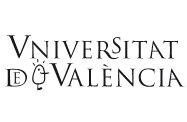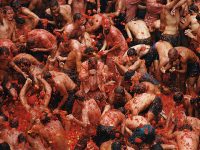Interview with Antonio Ariño and Joan Francesc Mira
«Festivities make us human»
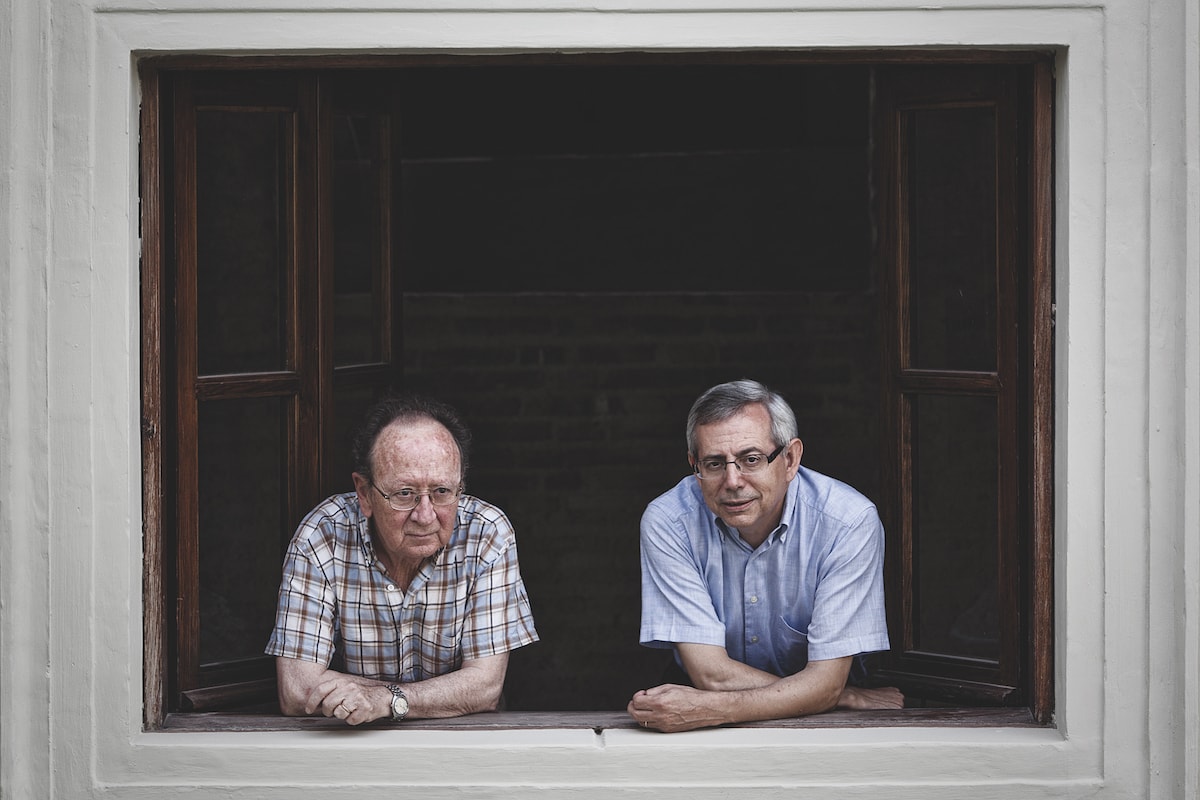
In the late eighties, Joan Francesc Mira proposed the idea of publishing a book on the Valencian festivals to Antonio Ariño, to form part of an ethnographical collection entitled «Temes d’Etnografia Valenciana», which he edited. The proposal materialised, turning into the voluminous work Festes, rituals i creencees (Festivals, Beliefs and Rituals), and later into a commitment that would occupy much of his research, to the point of currently being the most knowledgeable person on Valencian festivals (he has a new book about festivals in the post-Christian era written jointly with the researcher Sergi Gómez, entitled La festa mare: Les festes en una era postcristiana). For this reason, we thought it would be interesting to invite them both to this interview to talk about, and discuss, the origins of festivals, their links with seasonal cycles, even the biological background that may exist in many facets of festivals. Also, this interview reunites –if you will– the «mentor» and the «disciple». Thus, this reunion is also cause for celebration.
Antonio Ariño: «Ritualised behaviour does exist in other animals, but cooperative rituals are inseparable from festivals if they are human-specific»
Do festivals make us human?
Antonio Ariño: Festivals represent one of the features distinguishing us as human beings. Ritualised behaviour does exist in other animals, but cooperative rituals are inseparable from festivals if they are human-specific.
Joan Francesc Mira: It is difficult to know whether festivals as such are a feature present in the early process of humanisation. What I have found at archaeological sites is evidence of symbolic elements associated with funeral rites. This would indicate that these early humans had a symbolic mental projection. But, I don’t know whether this counts as festive behaviour.
A. Ariño: A ritual becomes a festival to the extent that it leads to celebration. And celebration in this sense seems to have arisen, at least in the Neolithic period.
Joan Francesc Mira: «The fallas is a peculiar urban phenomenon. Apart from the critical aspect and other related issues, we can say that it is a greatly territorialised festival covering a large area»
Do you really think that in the humanisation process, festive rituals gave us an adaptive advantage because they promoted group cohesion? That is, a more festive group was also stronger?
J. F. Mira: Any form of ritual behaviour, from the moment it involves rules, concepts, a vision of the cosmos, and so on, is an example of advanced humanisation. The way in which the ritual takes place according to collective judgment implies not only that there is a group, but that it is reinforced. Take, for example, a wizard in a cave, despite being a lone ritual it is being performed with a collective projection.
A. Ariño: I agree. When a ritual exists, it implies there is prior social organisation. The important thing is not so much to discover whether festivals came first, or cohesion. This organisation involves a division of labour, and a degree of organisation, cooperation and extraordinary collaboration, which would be difficult to find in the early stages of humanisation. But what is clear is that the group is reinforced through celebration and ritual, and celebration and ritual create a group. This is a dynamic that still stands today. Wherever there is identity there is celebration.

Photo: Miguel Lorenzo
Which came first, festivals as a human cohesive element, or religion –a belief in the supernatural–? Or maybe they were two simultaneous processes?
A. Ariño: Festive rituals are not unconnected with leisure, sporting, musical or religious activities… these are the ingredients that together make a ritual. Festivals are held to celebrate something that stands out from the run-of-the-mill; they infringe the rules through a somewhat metaphorical vision of the world. In this sense we cannot separate the religious dimension of festivals. Or at least we cannot separate the holy dimension.

Photo: Miguel Lorenzo
Festivals are often accompanied by alcohol and other drugs, or activities such as dance or games, all geared to releasing endorphins… Are we genetically wired to seek this feeling of wellbeing encouraged by festivities?
J. F. Mira: To seek satisfaction is obviously in our nature.
A. Ariño: In festivals, the body, and anything stimulating the pleasure-seeking body, is essential, because festivals represent an institution searching for spontaneity. The goal of a festival is pleasure, but festivals involve hard work and you end up exhausted. And group pleasure is also sought. I think we should consider that festivals play out a range of social structures, and they are adaptive in this sense.
J. F. Mira: And another important point. Just as they explain cohesion, so too they explain conflict, or seek hierarchy.
A. Ariño: But festivals don’t go well with internal dissent, what they do is to confirm internal cohesion to others. Others who are generally outsiders, but may also be insiders. In the context of the Fallas festivals, we often hear people referred to as «antifalleros», and these people –who are against the festival– may no longer be considered Valencian. It is all about building group identity stereotypically. Whether this succeeds or fails is another matter.
Antonio Ariño: «Festivals involving bulls are not a cultural heritage, they do not represent values that should be preserved for posterity»
Talking of Fallas, what is so special about these festivals?
J. F. Mira: Fallas is a peculiar urban phenomenon. Apart from the critical aspect and other related issues, we can say that it is a greatly territorialised festival covering a large area. A kind of neighbourhood or street identity is created around each Falla (monument), and egalitarian internal territorial microcompetition. And simultaneously there is a hierarchy based on the category of each Fallas monument.
A. Ariño: There are also the historical underpinnings, as they were initially popular festivals organised at the individual street level, rather that a joint celebration. Back in the nineteenth century, nobody identified Fallas with being Valencian.

Photo: Miguel Lorenzo
A very popular festival is the night of Sant Joan (Saint John). Underlying this festival is a belief in the magical properties of plants and nature. In the book entitled Festes, rituals i creences (Festivals, Rites and Beliefs), Antonio Ariño explains that on the night of Sant Joan people do things like bathing in a river (Ludiente), putting sugarcane –cànem de l’hora– on their hair (Suera), going in search of fern –falgueras– (Serra) to cure hernias… Is the night of Sant Joan really all that magical?
A. Ariño: Rituals are characterised in that they make something out of nothing. What worldly difference is there between the last second of the last minute of the last hour of 2012, and the first second of the first minute of the first hour of 2013? None, whatsoever, in terms of physical length. But, thanks to ritual, in social terms the difference is obvious.

Photo: Miguel Lorenzo
But what about magic, and the actual properties plants harbour? They say that at this time of year –late spring– plants have much higher levels of secondary metabolites, substances with healing properties, than in autumn, for instance.
A. Ariño: That’s what you might call technical reflexivity. I grew up in a rural area where people never pondered this question. There are moments that are considered magical, and power is believed to flow by performing certain rituals. The reflectivity of the physician or technician, who decides to check whether any elements in the plants used on this date cause certain effects, comes afterwards. And in some cases it is possible. But the fundamental characteristic of festivals and rituals is that they are practical, not intellectual. And as they are practical, the whole body must be involved. That is why beverages, aromas or incense are fundamental elements in the power of a ritual.
And this event is also linked to the change of season.
A. Ariño: It is somehow linked to the transit of the stars, the cosmological vision we have discussed.
J. F. Mira: We also have winter festivals, like San Antoni (Saint Anthony), where the bonfire is a central part of the festivities, and could be associated with the alleged power of fire to transform. But, practically speaking, if you want to celebrate a festival in winter you need heat and light. Sometimes we go to extremes, looking for the symbolic meaning in things that arise from more practical reasons.
A. Ariño: But just from a basic element, group interaction gives rise to unforeseen effects and interpretations. In a world without electricity, fire is a fundamental constituent on the eve of a festival.
So when they say that Mediterranean peoples love fire, is it a myth?
J. F. Mira: On the Mediterranean, the Atlantic, the Pacific… we all love it.
A. Ariño: There are common elements in all agrarian societies, which can be attributed a number of different meanings, but they are common none the same.
Joan Francesc Mira: «All festivals related to the life cycle have a deep feeling of expressing or manifesting the acceptance of the new group member or element»
But fire is a special element of the Fallas festivals and Sant Antoni bonfires.
A. Ariño: What is special is how they have developed.
J. F. Mira: In our region, name any festival you like, it will have grown. I am very familiar with festivals involving bulls, like the bou embolat («flaming bull»), and compared to forty years ago, all that remains the same today is that there is still a bull. Now people have more money and they spend it on festivities. In the past, these festivals belonged to closed communities, to the people themselves.
A. Ariño: There weren’t as many spectators as there are nowadays.
What relationship is there between the life cycle and celebrations? Is there an inherently human need to celebrate the stages in life?
A. Ariño: Another paradox of festivals is they construct social order and the order of life. Without social order, the length of time would be unbearable. Life would be much more tedious. What festivals do with social time, with celebrations like New Year’s Eve, they do too with a lifetime by celebrating the different stages in life.
So what festivals do is to break up time…
A. Ariño: They create order where there was nothing but indefinite time.
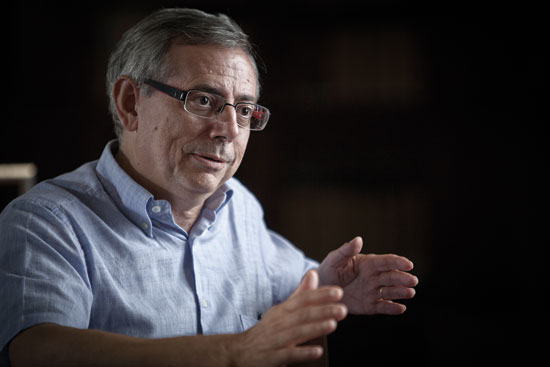
Photo: Miguel Lorenzo
In the past, the stages in life were primarily marked by religious rites, but now we find these are being replaced by civil celebrations, beyond civil marriages there are –curiously– civil «baptisms» too.
J. F. Mira: In the Catholic realm, the christening itself lasts five minutes. The rest of the celebration comes afterwards, as soon as they leave the church they begin to sing goodness knows what. The strictly religious part is actually given little importance.
A. Ariño: Quantitatively speaking, but qualitatively speaking it is essential.
J. F. Mira: All festivals related to the life cycle have a deep feeling of expressing or manifesting the acceptance of the new group member or element. An interesting question in this respect is that European tradition is the one that least emphasises the rite of passage to puberty, or becoming of childbearing age.
Could this be a religious question? A taboo?
A. Ariño: I think it has to do with our Roman heritage. The Romans did not celebrate it. But other Catholic societies without Roman heritage, such as Mexico, do celebrate it, especially for women. There is an extraordinary ritual display of young women.
There is also a need to hold funerals, to say a few last words of farewell to the deceased.
J. F. Mira: In many societies, ours included, funeral wakes represented a real celebration. I get the feeling that other celebrations like marriage have changed relatively little, while funerals have changed totally. People do not die at home any more, they die in hospital. Before, great importance was given to the act of taking the deceased from their home to the church, and on to the cemetery, but now all that has been lost.
A. Ariño: We have banished death from our everyday environment. In the past, children saw death as something quite natural. Now death has become a taboo. But we are living a new process of death ritualization, orchestrated by funeral homes, with the presence of psychologists and counsellors to help us through our grief.
Antonio Ariño: «In festivals, the body, and anything stimulating the pleasure-seeking body, is essential. The goal of a festival is pleasure, but festivals involve hard work and you end up exhausted»
It is not just this kind of celebration that has undergone change, so too have other festive celebrations. What do you think about the evolution, if you will, of celebrations in our country?
J. F. Mira: In this country all festivals have been inflated, all of them: the bulls, Moors and Christians, Fallas… My question is –and I know there is no answer– why has the whole festive tradition in Valencia, snowballed like this?
A. Ariño: I don’t think it is just here, it is a phenomenon that has occurred throughout Spain and, especially, in southern Italy too. The eighties was a period of festive revival throughout the Mediterranean. And, yes, it is true that there are many associations related to festivals in Valencia: associations related to Fallas, Moors and Christians, music bands, community groups organising the bulls… So when people say that civil society is not well-coordinated or well-organised in Valencia, I say that’s not true.
J. F. Mira: But this huge capacity for organisation and coordination works well for immediate and direct effects, but not at the national level.
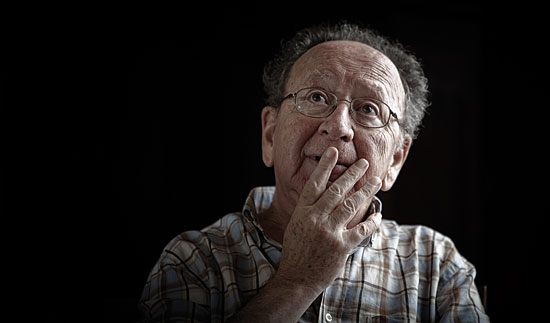
Photo: Miguel Lorenzo
And how do you interpret festivals like Sant Antoni?
A. Ariño: It’s spectacular how it has resurfaced. There was a time when it was in real decline, but I would say now that it is the most celebrated festival during the whole year, despite being such an austere affair, a farmers’ festival. With respect to the Muixeranga, something similar happened: before towers of people forming the Muixeranga were farmers or farm-labourers, the risk component was to build those human towers. Now it is all different: the group, the number of figures and their height… It has changed tremendously.
Do you have a favourite festival?
A. Ariño: I don’t have one, I have two. The Moors and Christians held in Biar, and Sant Antoni held in Vilanova d’Alcolea.
J. F. Mira: I also like San Antoni in general. And festivals with bulls, but as they were forty years ago.
And what were they like before?
J. F. Mira: Something much more communal and improvised. And here comes an example of symbolism: the perfect bou embolat («flaming bull») had to be «virgin», that is, it must never have been used for this festival before, it was purchased and not rented, and finally it had to be killed and eaten afterwards. There was a community component that has disappeared nowadays.
Joan Francesc Mira: «In the past, funeral wakes represented a real celebration. I get the feeling that other celebrations like marriage have changed relatively little, while funerals have changed totally»
But there was also cruelty to animals.
J. F. Mira: But it was greatly controlled. I’ve seen dozens and dozens of bullfights, but they took into account that the animal did not suffer.
Are you in favour of festivals using bulls? Bullfighting?
J. F. Mira: Only the kind I mentioned before, those in the past. I liked them from the cultural point of view, because they clearly expressed the feeling of community.
A. Ariño: One thing is to research something, and another is to be in favour. The relationship between people and animals in agrarian society is the key to understanding how these practices came about, they were extremely aggressive. Animals were greatly mistreated, but this was not the perception at the time. For me the conclusion is obvious, these festivals are not a cultural heritage, they do not represent values that should be preserved for posterity. Cultural heritage must have an ethical-moral concept, otherwise we are lost.
